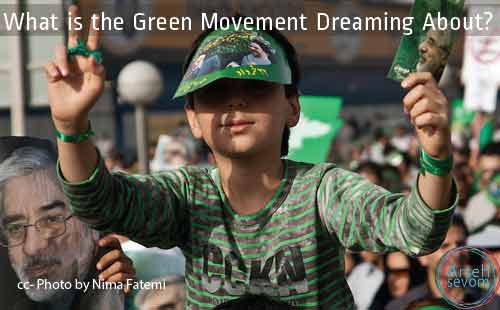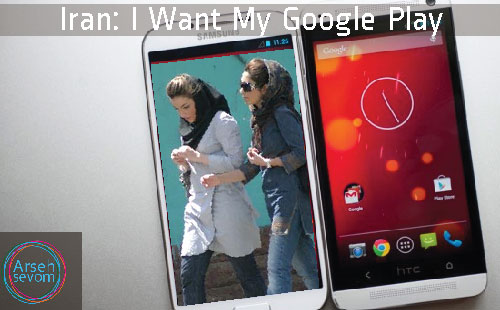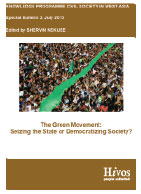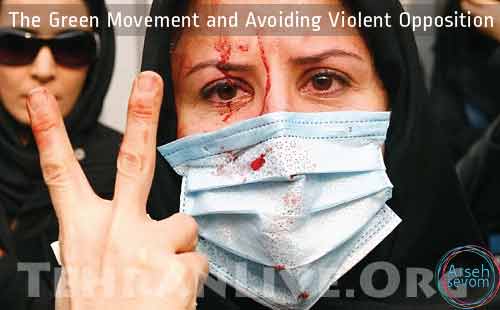
What is the Green Movement Dreaming About?
August 26, 2013
#Iran — I Want My Google Play
September 2, 2013
The Green Movement:
Seizing the State or Democratizing Society? Edited by Shervin Nekuee, published by the Hivos Knowledge Programme
by Elena Cavagni
The Women’s Movement and the Rights-Based Discourse
The contribution of women’s groups in the Green Movement is the topic of the second chapter.
The researcher and activist Layla Saidi narrates the experience of the Iranian women’s movement since the start of the “One Million Signatures Campaign” up to the 2009 suppression of protests.
The women’s movement built a coalition with the Green Movement based on the demands of civil rights. They promoted the legal and anti-discriminatory discourse of the opposition’s democratic agenda.
Rather than assimilating themselves into the larger democratic movement, women maintained a strategic two-way connection. This allowed them to preserve their own nature within the movement as non-ideological, “demand-oriented, non- violent, pluralistic […]”
While the strong presence of women during the protests spread the non-violence discourse throughout society, together with a new feminine aesthetic, the current situation of the women’s movement is one of strategic and organizational re-working. The 2009 crackdown of protests brought about fear and doubts within the women’s movement. Emigration and asylum-seeking exacerbated the shaken balance of Iran’s domestic women’s movement.
The writer states that “the slowing and even the stopping of a movement due to suppression and force do not equal its end and decline.”
Saidi argues that in order to keep the equality discourse alive and make it successful, women should be “investing in and creating workable strategies for intensifying the output of the transnational operations of the Iranian women’s movement […]”
Inescapable Violence
To what extent is non-violence an absolute value? Can the Iranian Green Movement resort to violence as an act of self-defense and still consider itself a peaceful movement?
Ammar Maleki applies his experience in comparative research at the University of Tilburg to analyze the role of violent and non-violent strategies at various stages of the Green Movement. The debate on the meaning and boundaries of non-violence is a long standing one, which has been examined by thinkers and activists such as Gandhi, Martin Luther King, Nelson Mandela, and Henry David Thoreau. However, it is essential to avoid denying the existence of violence.
Maleki makes a distinction between pre- and post-victory violence, writing:.
“The connection between non-violence and civil resistance is more dependent on complete refusal of ‘post-victory violence’, rather than absolute rejection of ‘pre-victory violence […]’.”
He adds that people cannot be indifferent to violence:
“Civil resistance avoids violence, but it never escapes it; if that were the case then it would never be resistance.”
The author reflects on the vague strategic position of the Green Movement in this regard. As a spontaneous and heterogeneous movement, the Green Movement rapidly evolved from an electoral wave to a civil movement. In contrast to the previous reformist government, which refrained from supporting demonstrations and any instance where violence might erupt, the leaders of the Green Movement backed the resistance and joined the protests on the street. According to Maleki,
“Avoiding violence was more a tactical and instinctive act, rather than a principle or a code […]. This does not equate to the devaluation of avoiding violence within the Green Movement […] [However,] if the rules of civil resistance are set, there is a chance to avoid violence and also the occurrence of its post-victory form.”





